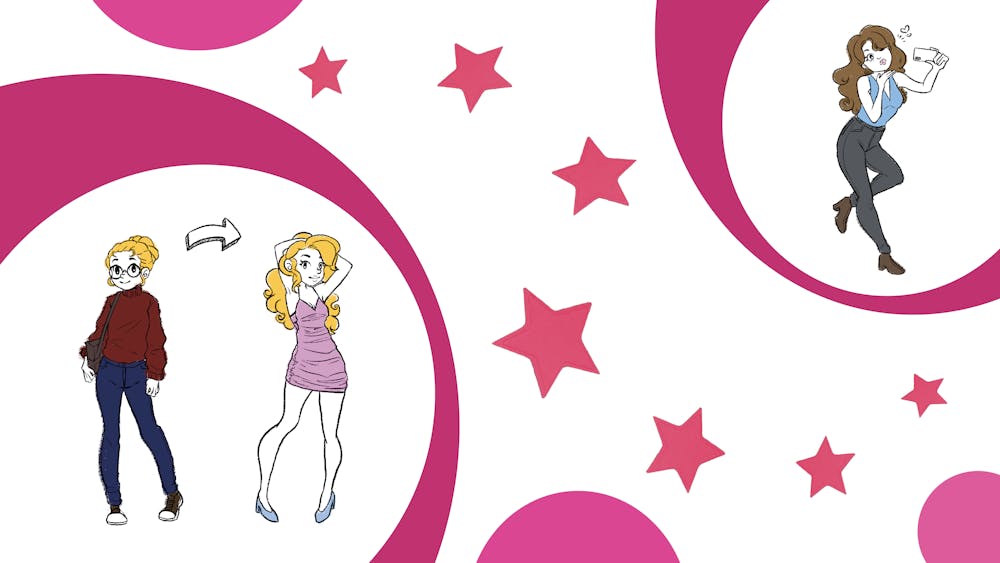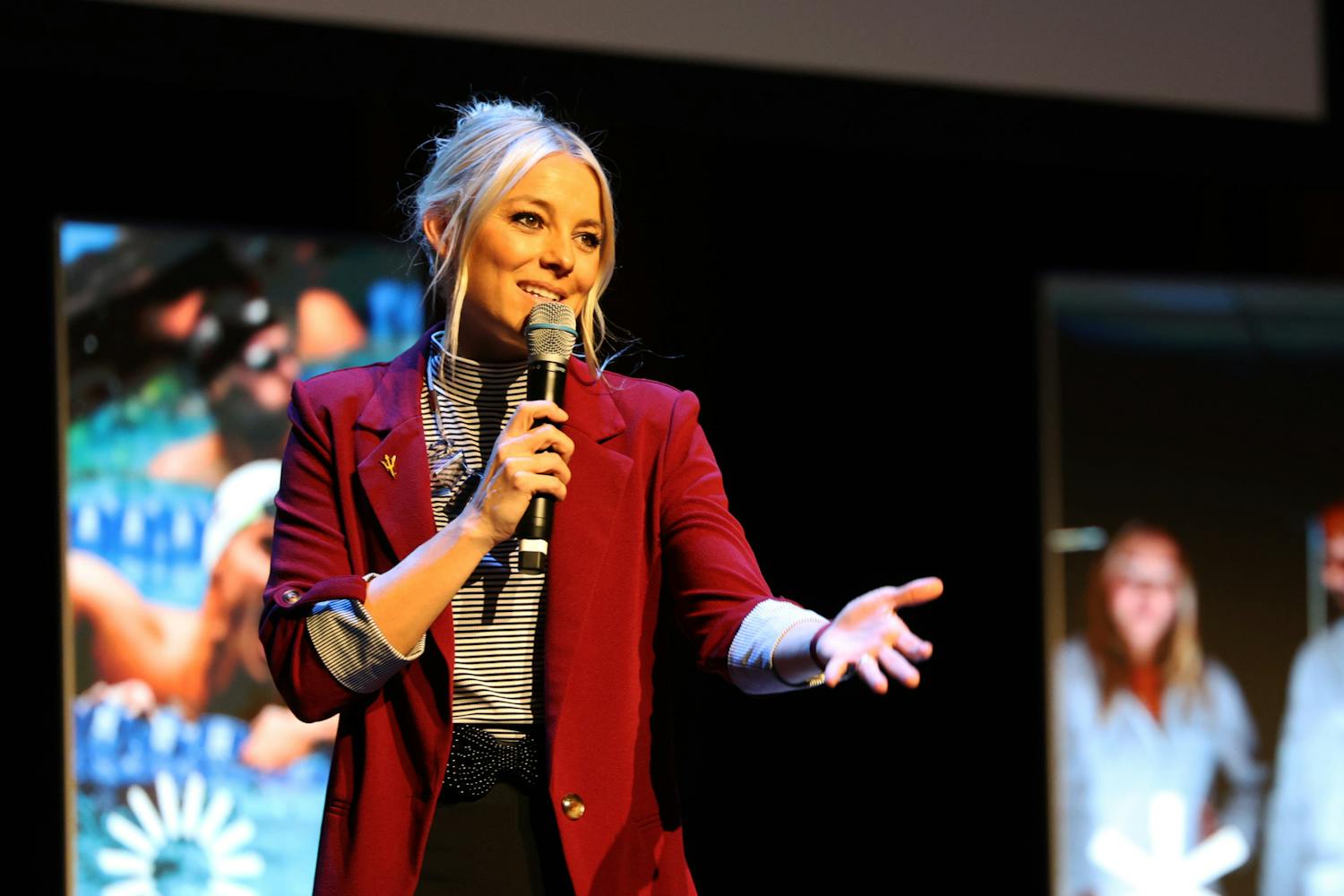Choosing the perfect university requires thorough research — with roughly 6,000 higher education institutions in the U.S. in 2020-2021, aspiring students must tackle the challenge of picking a school that best suits them. Some might make their decision based on degree programs; others might look into a campus's proximity to city life, the school's dorm quality or enticing extracurricular opportunities.
But ASU appears unique among its educational peers, as it's become known for a special opportunity few schools in America can offer to students: the opportunity to become hot. Since 2021, a trend known as the "ASU Effect" has infiltrated the collegiate corner of TikTok.
The trend provides people attending ASU, primarily women, the opportunity to showcase their glow up from their appearances before college to their present selves. Some of the most common before and after posts display transitions from brown to blond hair or updated wardrobes, and some students even highlight the ways their personality changed.
The comment sections of these videos are filled with high schoolers and incoming freshmen expressing their excitement to experience their own ASU Effect. "I feel like this is my sign to go," one comment read.
Currently, dozens of videos from various students appear when searching "ASU Effect" on TikTok, along with suggested popular searches like "ASU Effect Black girl," "What is ASU Effect," and "ASU Effect Latina."
Although the trend itself is meant to showcase what these students believe to be positive changes since starting their college journey, some viewers have noticed the traits displayed by these girls seem to fall into a similar line — tan, thin and fair-haired.
"ASU just turns every blond white girl into the typical Instagram sorority stereotype," one commenter said.
Even though the trend does empower many female students to uplift one another amid a time of major change for young adults, it does raise questions about the inclusivity of on-campus beauty standards and the negativity that arises from pressures to conform.
Affected by ASU
"When I was a freshman, I slowly started adapting to the people around me," said Elaina Kreatsoulas, a junior studying sports business. "A year later, people I knew in high school told me I 'glew up.'"
Kreatsoulas is one of many girls who participated in the ASU Effect trend on TikTok. She attributes her transformation to an abundance of free time brought on by the pandemic and the cultural shift she experienced moving to Arizona.
"I definitely believe the ASU Effect had an impact on me," Kreatsoulas said. "I come from the Midwest, so girls aren't really all glammed up. The things I wear here, I wouldn't wear in my hometown."
According to Kreatsoulas, there are certain styles of clothing and accessories women at ASU often wear that would not fit in with the styles girls wore back at home. "If I went to a hangout spot with all my friends from high school, I wouldn't have eyelash extensions on or wear super cropped tops," she said. "It just shows that ASU's effect wouldn't have happened if I decided to go anywhere else."
Although Kreatsoulas has noticed physical changes since coming to ASU, she believes the substantial changes occurred internally. "Back at home, I don't feel like I was expressing myself as much," she said. "I'm still myself, but I speak more confidently and am a lot more sociable."
Even though Kreatsoulas said there is a pressure to live up to ASU's beauty standard, she feels keeping her own identity intact is more important.
"I'm brunette, more ethnic and Greek, so it's hard to fulfill that standard," she said. "I just want to stay myself."
While Kreatsoulas' ASU Effect seems to have transformed her more internally, Sydney Lindon-Lake, a sophomore studying communication, believes her transformation was purely physical.
"I think the typical beauty standard at ASU is skinny, blond and tan," Lindon-Lake said. "Since I started at ASU, I've found myself spending hundreds of dollars to bleach my hair and buy bottles of self-tanner."
Many of these physical changes were inspired by those around her. "Everyone else is doing it," she said. "It's like a silent pressure. I thought, 'I need to do it too so I'll look like them.' There's always a sense of comparison to the other women around me."
According to Lindon-Lake, these comparisons come at a steep price, and the ASU Effect is less natural than its participants make it seem online. "A lot of the women I know talk about how expensive it is," she said. "Spray tans alone are almost $50. Hair appointments can be hundreds of dollars. Getting nail appointments every week is also an expensive habit."
In August, a video from ASU's Delta Zeta sorority was posted to TikTok showcasing a synchronized dance among its members, who were dressed head-to-toe in Barbie pink and were welcoming new recruits to the "Delta Zeta Dream House." A majority of these girls fit Lindon-Lake's description of ASU's beauty standard, and commenters had a lot to say about the video's lack of diversity.
"You'll never find another girl like me," one user said sarcastically.
"It's like a vanilla latte," another commented.
The constant, ongoing pressure to conform is what may lead women at ASU to spend a significant amount of money enhancing their appearance, according to Lindon-Lake.
"I know it makes them feel beautiful," she said. "But I wish there was a way for women to feel beautiful without changing themselves."
'It's all beautiful'
Despite ASU being home to a diverse student body — with over 48,000 undergraduate students identifying as people of color — the mainstream beauty standard at ASU continues to largely be upheld by white female students, as demonstrated in the ASU Effect TikToks.
The ASU Effect's popularity among girls in on-campus sororities may contribute to the continuation of this uniform narrative. Many of the girls who share their transformations on TikTok attribute their glow ups to joining a sorority.
"In high school, I remember looking through ASU's sorority pages, and a lot of the girls looked the same," said Bailey Gomez, a junior in the interdisciplinary studies program studying nursing. "I kind of noticed after joining a sorority that I had also changed my look."
For her, the ASU Effect manifested itself in both conscious and subconscious ways. "I don't necessarily think I did it to fit in," she said. "But the people you surround yourself with are going to rub off on you. I honestly did it for myself, though."
Although Gomez seems to be among the many sorority girls who aspire to this beauty standard, she said the ASU Effect is not an experience students need to have in order to be attractive. "There's such a diverse population of people here," Gomez said. "If you feel like you don't fit in, it's fine. You don't have to look a certain way."
But for others, not fitting into the mainstream beauty standard at ASU can be an isolating experience.
"Clearly, I don't fit in (to the ASU beauty standard)," said Alisha Compton, a senior studying nursing. "I'm not blonde. I'm a Black young woman."
Feeling out of place is common for people of color at ASU, she said, as the institution's undergraduate population is roughly 49% white.
"I'm the only Black student in my cohort," Compton said. "I do not fit in that space whatsoever going purely off of beauty standards."
Despite this, Compton, the vice president of the Black African Coalition, found on-campus organizations aimed at minority groups were spaces that granted her the opportunity to flourish.
"In any space you attend, there's going to be different beauty standards," she said. "I'm confident with myself, and the spaces I've found at ASU have given me that confidence."
As of 2020-2021, the BAC is a community of 28 ASU organizations aimed at uniting Black, African and Caribbean students while increasing advocacy among the student body.
Although Compton feels she cannot conform to her picture of a stereotypical ASU girl, she and other BAC members express themselves in their own ways.
"Whether we wear our hair natural, have braids, extensions…it's all beautiful," she said.
Confidence, according to Compton, is something she has had to develop over the past four years at ASU — it was not a quick transition upon arriving on campus.
"Being the only Black student in a lot of my classes, I've definitely felt like an outsider," she said. "And because I knew I wasn't fitting into that space, I had to exude my own confidence. Basically, fake it 'til you make it."
"I started wearing curlier wigs," said Victoria Webb, a junior studying political science. "My fashion sense changed a lot too. I didn't know how to dress before I came here."
Prior to her time at ASU, Webb had preconceived notions about the standard of physical attractiveness held by the school's student body. "Definitely being skinny (is considered attractive)," she said. "The guys are in the gym all the time, their abs always showing. That's how I saw the school before I started."
Unlike Compton, Webb believes that although the outside world may believe ASU upholds a specific standard of beauty, the reality is far different from what is perceived.
"We're like a big melting pot of cultures," Webb said. "There's beauty in all aspects."
Edited by Camila Pedrosa, Savannah Dagupion and Madeline Nguyen.
This story is part of The Hot Issue, which was released on Oct. 4, 2023. See the entire publication here.
Reach the reporter at lmesqui2@asu.edu and follow @leahmesquitaa on X.
Like State Press Magazine on Facebook, follow @statepressmag on X and Instagram and read our releases on Issuu.




